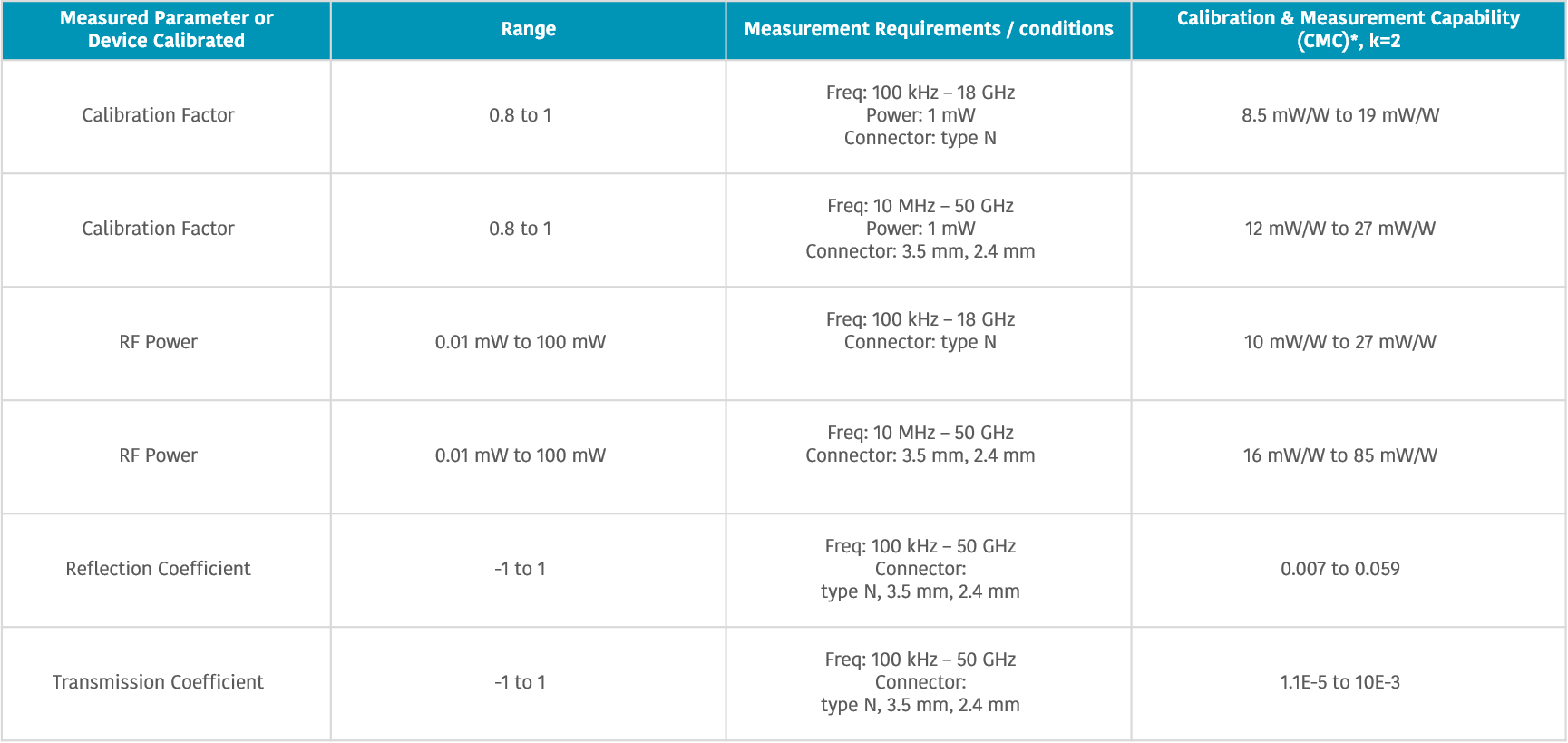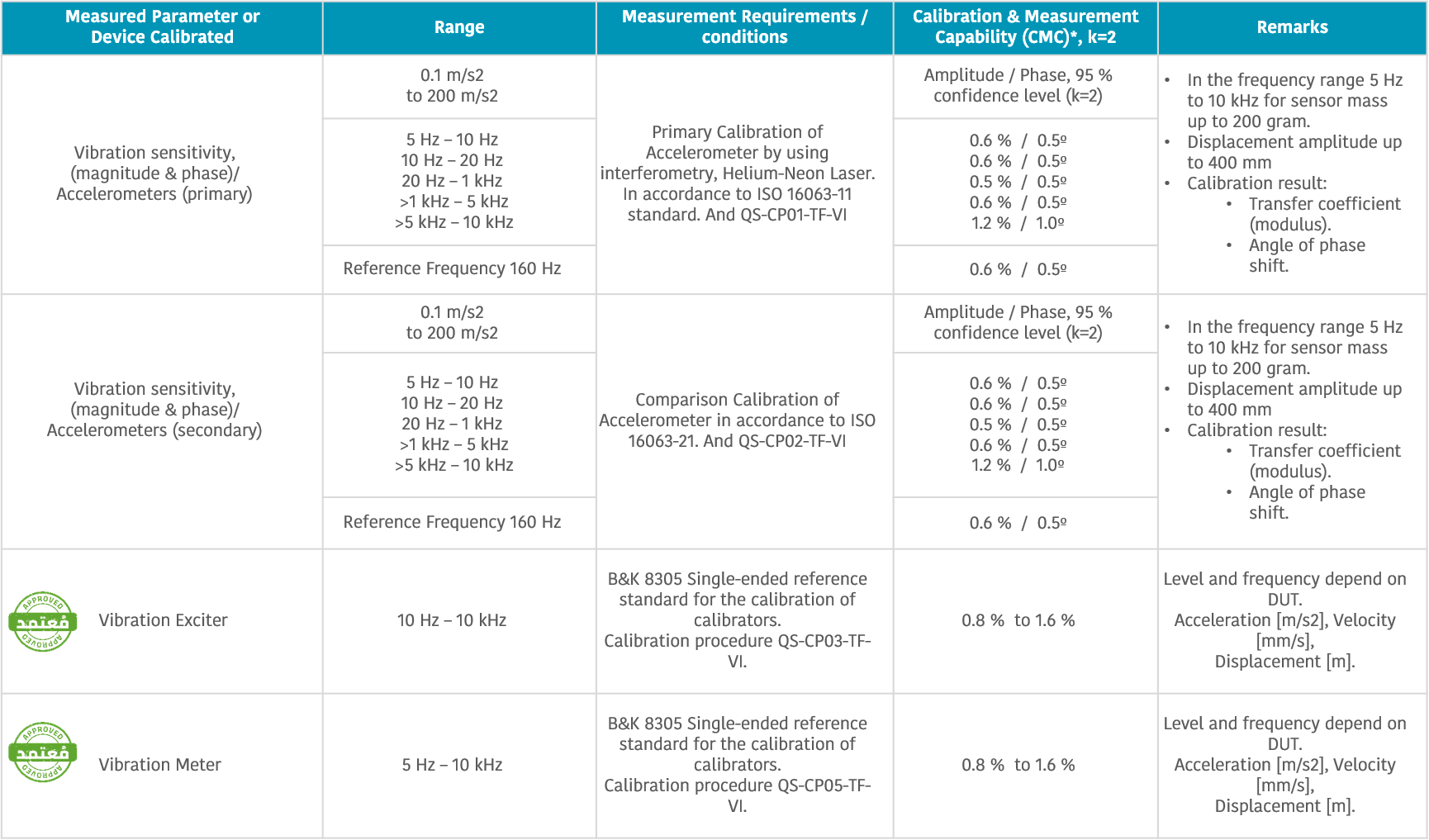The laboratory works on developing and maintaining national standards for vibration measurements to achieve traceability in this field, being the first of its kind in the Gulf region. The laboratory stands out for adopting the latest technologies, including the use of interferometric laser beams to measure the displacement resulting from vibrations. Additionally, it provides calibration services to various industrial, military, and civil sectors, especially with the commitment of the General Authority for Meteorology and Environmental Protection to establish regulations defining the allowable limits for vibration noise pollution in industrial workplaces, production lines, bridges, and railways according to the World Health Organization requirements. The laboratory calibrates all types of vibration level measurement devices and vibration generators, and it possesses the following standard measurement capabilities:
It is the primary reference in the Kingdom for establishing and maintaining national standards for time and frequency measurement, aiming to achieve comprehensive metrological traceability in this field. The laboratory also undertakes the task of broadcasting the national time to various entities in the Kingdom. The Time and Frequency Laboratory possesses the modern equipment and technologies necessary for measuring time periods, frequency, rotational speed, and frequency spectrum. Additionally, it provides calibration services to various sectors in the Kingdom, including military sectors, telecommunications companies, hospitals, government, and private institutions. This includes the calibration of stopwatches, spectrum analyzers, rotational speed measurement devices, signal generators, time counters, cesium and rubidium clocks. The laboratory is capable of conducting calibration and measurements with the highest levels of accuracy and reliability, as follows:
Calibration and Measurement Capabilities:
The laboratory strives to establish, maintain, and develop national standards for acoustics measurements, aiming to achieve comprehensive metrological traceability in this field. It is the primary reference in the Gulf region in this regard. The laboratory provides calibration services to all sectors, industrial, military, and civilian, especially with the General Authority for Meteorology and Environmental Protection's interest in setting regulations that determine permissible noise pollution levels in different areas, in accordance with the World Health Organization requirements. The range of devices calibrated by the laboratory includes all reference and secondary microphones for acoustic measurements, sound level and noise measurement devices, devices measuring the sound doses humans are exposed to, in addition to reference devices used to verify the efficiency of sound measurement devices and human hearing sensitivity. The laboratory possesses the calibration and measurement capabilities necessary to meet the needs of these sectors with the highest levels of accuracy and reliability, as follows:
Calibration and Measurement Capabilities:
The High Frequency and Microwave Laboratory is dedicated to establishing, maintaining, and developing Saudi national standards, aiming to achieve metrological traceability in the field of power measurements at high frequencies and scattering parameters using directional network analyzers. The laboratory is equipped with modern facilities necessary for measuring calibration coefficients for power sensors, power measurements at high frequencies, reflection coefficients, and scattering coefficients. Additionally, the laboratory provides calibration services to various sectors, such as the military and telecommunications companies, by calibrating power sensors, power meters, attenuators, amplifiers, microwave signal filters, power dividers, antennas, cable and antenna analyzers, directional couplers, calibration kits, and directional network analyzers. The laboratory has the capabilities required to conduct calibration and measurement at the highest levels of accuracy and reliability, as follows:
Calibration and Measurement Capabilities:

The Vibration Laboratory focuses on establishing, maintaining, and developing national standards to achieve metrological traceability in the field of vibration measurements. It is considered the primary reference laboratory of its kind in the Gulf region. The laboratory employs state-of-the-art techniques, such as using laser interferometry to measure displacement resulting from vibrations. It provides calibration services to all industrial, military, and civil sectors, especially with the increasing focus on regulating levels of vibrational noise in industrial environments, production lines, and infrastructure, in accordance with the requirements of the World Health Organization. The laboratory has the necessary capabilities to calibrate all types of vibration measurement devices and vibration generators, and it possesses the readiness and equipment required to conduct calibration and measurement at the highest levels of accuracy and reliability.
Calibration and Measurement Capabilities:
